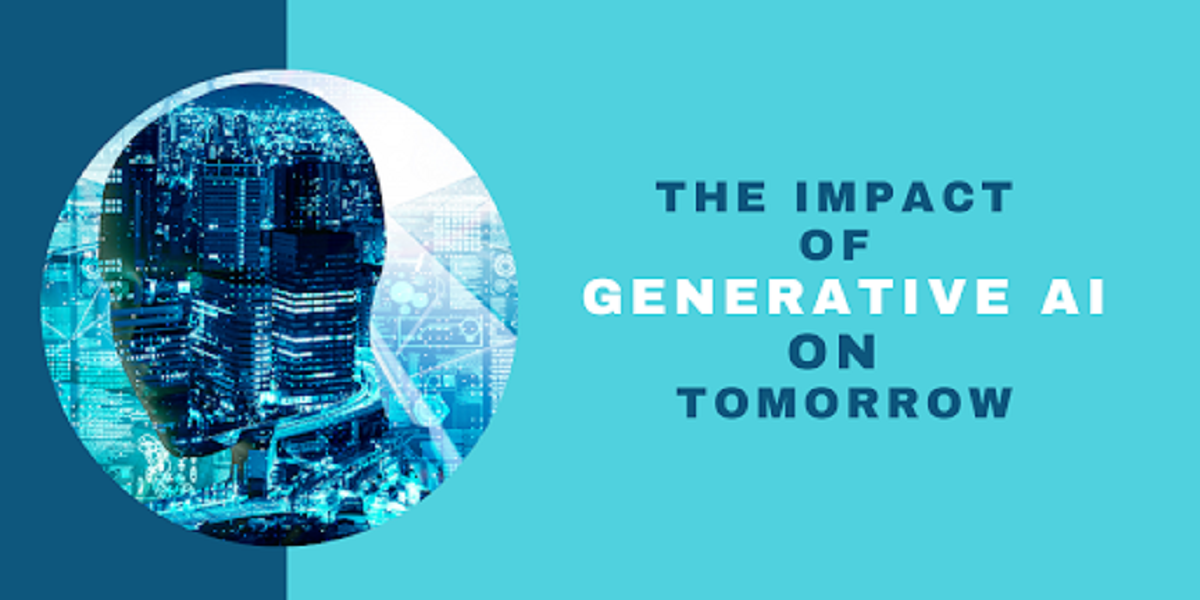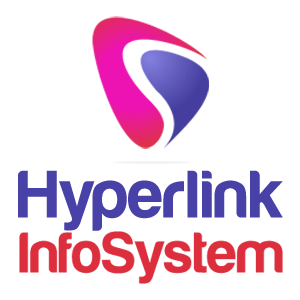
Artificial Intelligence is the most trendy technology in the current times on a global scale and continuously expanding. Considering AI as an umbrella term, Generative AI (GenAI) applications were introduced in the market with the emergence of large language models (LLMs) like ChatGPT and others. The technical industries that are underpinning generative AI development services within their processes have been processing at an unexpected pace. For this reason, we should be thankful for the enormous investments made by large technology companies and research labs in researching LLMs. The research study by McKinsey 2023 explored that generative AI tools worked on adding revenue of up to $4.4 trillion in the global economy. Expect its expansion, This term is defined as the form of machine learning that works on creating new content involving audio, images, code, text, simulations, and videos. Basically, GenAI is the sub-technology of AI that works on practicing neural networks for recognizing the structuring and patterns of the existing data sets for the creation of new content. GenAI’s expansion can be considered as one of the major contributions to the rise of the virtual world. The research data by Fortune Business Insights highlights the same aspect.
.png)
Source: Fortune Business Insights, 2024
The figure above highlights the future growth aspects of genAI and in this case, the market growth of this was valued at USD 43.87 billion in 2023. And this is expected to grow from USD 67.18 billion in 2024 to USD 967.65 billion in 2032. This shows a compound annual growth rate of 39.6% during this time frame. This shows the major growth of GenAI applications and its market expansion. This technique is treated as a unique innovation, as previously traditional AI-based conversational interfaces were only limited to predefined commands that needed to understand the purpose of queries, resulting in substandard responses. With this conversational AI technique, we can resolve these challenges by planning chat responses, learning, and understanding the matter. This integration provides benefits like resolving common issues, providing personalized support to consumers, and automating routine customer inquiries.
This post is all about highlighting the expanding nature of generative AI and its different aspects. In this context, the focus terms are the current industrial contribution of generative AI, its major benefits, and its future considerations. Give this post a quick read to understand and gain all the knowledge you need about generative AI.
The application development process has changed with the emergence of advanced digitalisation. GenAI is considered a major contributor and is expanding its horizon drastically. This section also highlights the same when it comes to its industrial expansion.
The emergence of generative AI in the market passed a decent time, as now the dust has settled and its capabilities are known to the industrial market very well. In other words, industrial leaders and businesses have developed a deep understanding of Generative AI solutions over time. According to the research methodology by Gartner Hype Cycle positions, the Generative AI expansion curve is at the “Peak of Inflated Expectations,” which means the expectations are above the existing reality of the capability of the technique. The market expectations from AI tools are continuously increasing beyond their capacity. Which is not right; in reality, the Generative AI development services no doubt offer unique opportunities and solutions but cannot hold the capacity to become everything to everyone. It is just a matter of perspective, as ChatGPT takes center stage and offers services smoothly in an already-established manner but not in something new. The current market expectations are enhancing and complementing tools. As an example, we can consider Microsoft Office’s Copilot, the Generative Fill features of Adobe Photoshop, and different virtual agents of productivity apps. This shows how we can expect a future of generative AI.
While we talk about LLMs, in the current times of generative AI advancements, somewhere the integration of these models is not acceptable due to the large parameter counts. This shows that focusing too much on parameter counts can lead to unexpected consequences. In other words, the current times are considered as the golden age of massive Generative AI models but these are still not perfect. This highlights a concern: only the big companies, fund holders and server spacers can opt for training these energy-hungry AI models. While concluding this issue, it shows the requirements of smaller language models that operate with fewer parameter counts. According to ongoing research, training smaller models on more data yields enhanced performance. They provide advantages like helping in democratizing AI, being operated locally, basically on smaller devices, and making AI more understandable. AI Models like Mistral’s Mixtral and Meta’s Llama3 models are confirmed to hold these capabilities along with being open-sourced.
No doubt, GenAI is growing rapidly, but from a future perspective, we can expect more advanced models in the coming time. In the same scenario, the emergence of the Multimodal technique can work to achieve this goal. This technique is defined as taking multiple types of datasets as input. This not only works on enhancing performance within the particular domain but also on enhancing the overall growth of the AI models. The benefits we can expect with such models are intuitive, versatile AI, and advanced virtual assistance. This can be expected as taking videos into the fold. With these multiple inputs, the AI model is open to diverse data sets, which provides it with more exposure to training and learning interfaces.
Both these terms are interconnected, as the cost of cloud computing resources increases when the availability of hardware starts to decrease. In other words, the global chip shortage, or Graphic Processing Unit (GPU) shortage is continuously reducing and due to this, companies are opting towards the options of cloud storage. But how long is it going to work with the cheaper prices, It is obvious that cloud storage is going to be expensive. To resolve this problem, the trend of smaller models has been integrated into the market and will surely expand its horizon in the coming future, making an effective solution.
Open-source software development is considered as the best practice of today’s digital expansion. In this, we get a wide range of support from different community developers and organizations involved in it. From a requirement perspective, users demand for high-performing applications. For this, we can consider the implementation of new techniques instead of going for new foundations. These techniques can be open-source approaches for training, fine-tuning, and tweaking the previously trained generative AI models. Some of these techniques are low-rank adaptation, quantization, and direct preference optimization (DPO). These techniques are defined as model-agnostic techniques.
As the development of software increases its horizon and becomes more efficient, we can expect the expansion of market demands with their additional feedback. In the case of GenAI, market expectations are not just limited to developing customer experience chatbots; they expect to expand the use cases of virtual assistance. In general, the AI system increases its speed and incorporates new streams and formats of information, communication, and instruction. But when we talk in advanced terms, task automation is an advanced concept that means developing agents for completion of the tasks. For example, with this, you can just point your camera at the fridge and ask the virtual assistant to help you out by suggesting a recipe with available veggies.
From a business perspective, the expansion of legal, economic, regulatory, and reputational consequences is completely dependent on the expansion of the popularity and accessibility of generative AI tools. To deal with such conditions, the developers use shadow IT, or BYOAI, to personally seek the help of GenAI sources without having any official IT approval. In other words, the developers look forward to accessing these tools without their approval. Because of this, many consumers are opting for the services offered by these developers for free, and this even improves the use of Generative AI by non-technical individuals.
The acceptance of multimodal capabilities along with low barriers of security can lead to many consequences. Such as deepfakes, privacy issues, bias, and evasion of CAPTCHA safety practices. To resolve these complex issues, the European Union (EU) introduced a provisional agreement on the Artificial Intelligence Act. This assures indiscriminate scraping of images for the creation of facial recognition databases, fake biometric data, social scoring systems, and AI for social or economic manipulation. It also defines categories of AI uses, such as high-risk AI systems and general-purpose AI (GPAI) systems. This can be considered a current as well as a future concern for healthy Generative AI development practice.
Generative AI is treated as one of the trendiest technologies in the current times and continuously expanding its nature. This section explores its benefits, which are mentioned further
The emergence of GenAI introduced many solutions in various industries and this is considered one of the best in them. The implementation of these solutions makes the process more accurate and consistent. Generative models like generative adversarial networks (GANs) work on producing high-quality outcomes, irrespective of the outcome type. It is like whether it generates a realistic image, enhances data, creates text, and others. These tools make sure you get everything with accuracy and consistency.
We can expect an increase of severe or complex issues with the simultaneous increase of technology. It is like the more advancements, the more we need to figure out the complexities. But with Generative AI, this can be resolved, This works on predicting potential issues even before they arrive by analyzing the previous data sets or records.
Don’t you notice AI applications are everywhere these days, as the emergence of these GenAI solutions is accelerating processes? As in the case of content creation, it provides the facilities for drafting, summarizing, and formatting the entire article. Along with this, it provides suitable options for making a decision quickly and proceeding to work. This results in streamlined workflows, improved productivity, and reduced manual efforts.
It is effective, right? you opt for cheaper and more feature-rich tools rather than investing your assets in sources that are not that productive. The emergence of generative AI tools works on optimizing resource allocation, making product-related predictions, and removing cost-cutting assets. Along with this, it automates the repetitive tasks within the organization that directly impact the cost.
The current demand for marketplaces is that they only accept products that are constructed according to the client’s needs. Generative AI applications primarily work on the concept of personalization or a client-centric approach. These tools work on recommending and developing the best-quality user experiences and advertisements based on individual preferences. This works best for businesses that completely revolve around their consumers.
Without Generative AI tools, it is considered that one can face disruptions in the software deployment process. But when we implement this, we can actually prevent such occurrence. In this way, companies can gradually integrate AI into their existing systems and work on proper planning, testing, and monitoring, leading to a successful deployment of the application.
No doubt, the emergence of Generative AI leads to enhanced access to knowledge and skill enhancement. In other words, AI represents a paradigm shift in the way or completely transforms our working procedures. But in this expanding nature, organizations need to be careful when it comes to dealing with the risks associated with AI. A careful consideration of GenAI’s benefits as well as the risks can lead to a positive future for the economy. In this way, GenAI can contribute to increasing productivity, efficiency, and innovative solutions covering diverse business functions. The emergence of democratized Generative AI is not only considered a technical innovation but also a cultural uplift for a more inclusive and collaborative workplace in the coming future.
